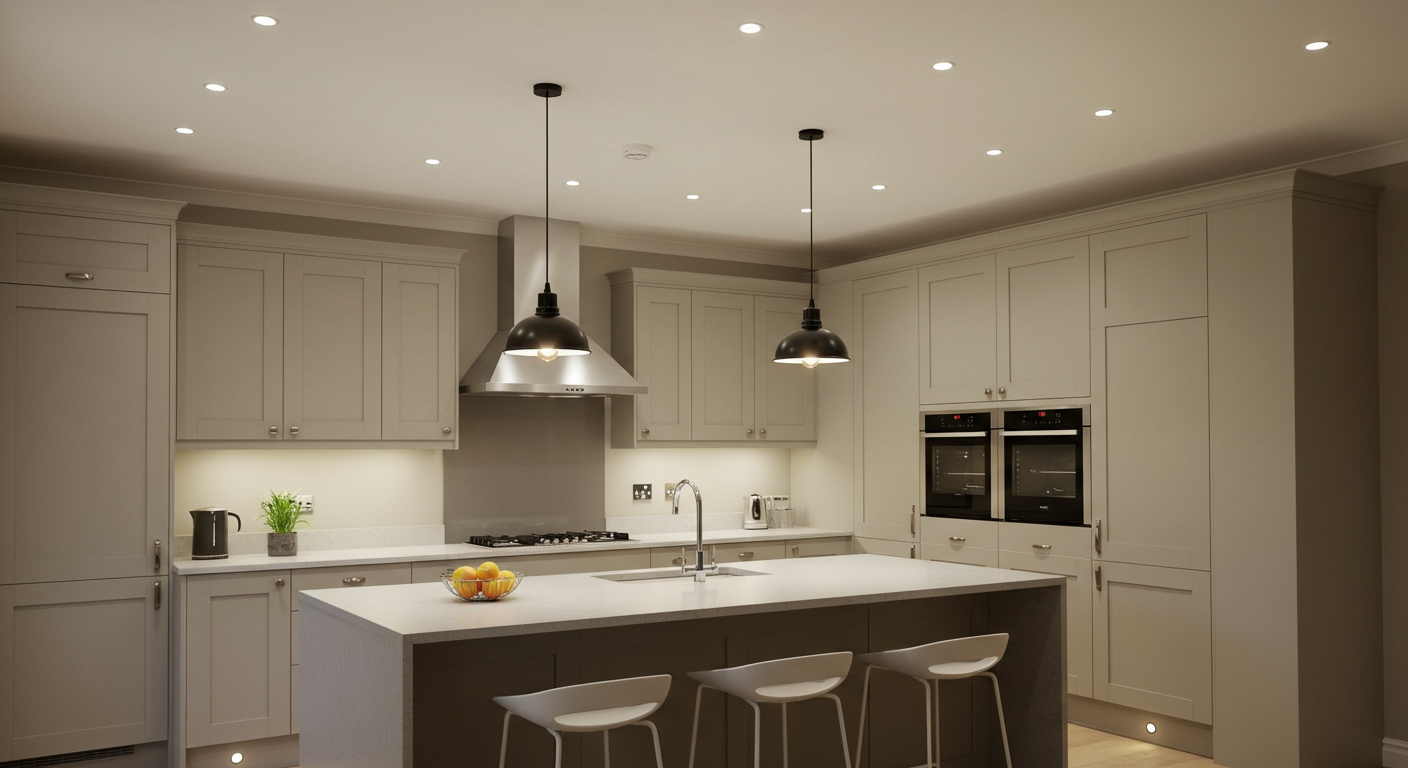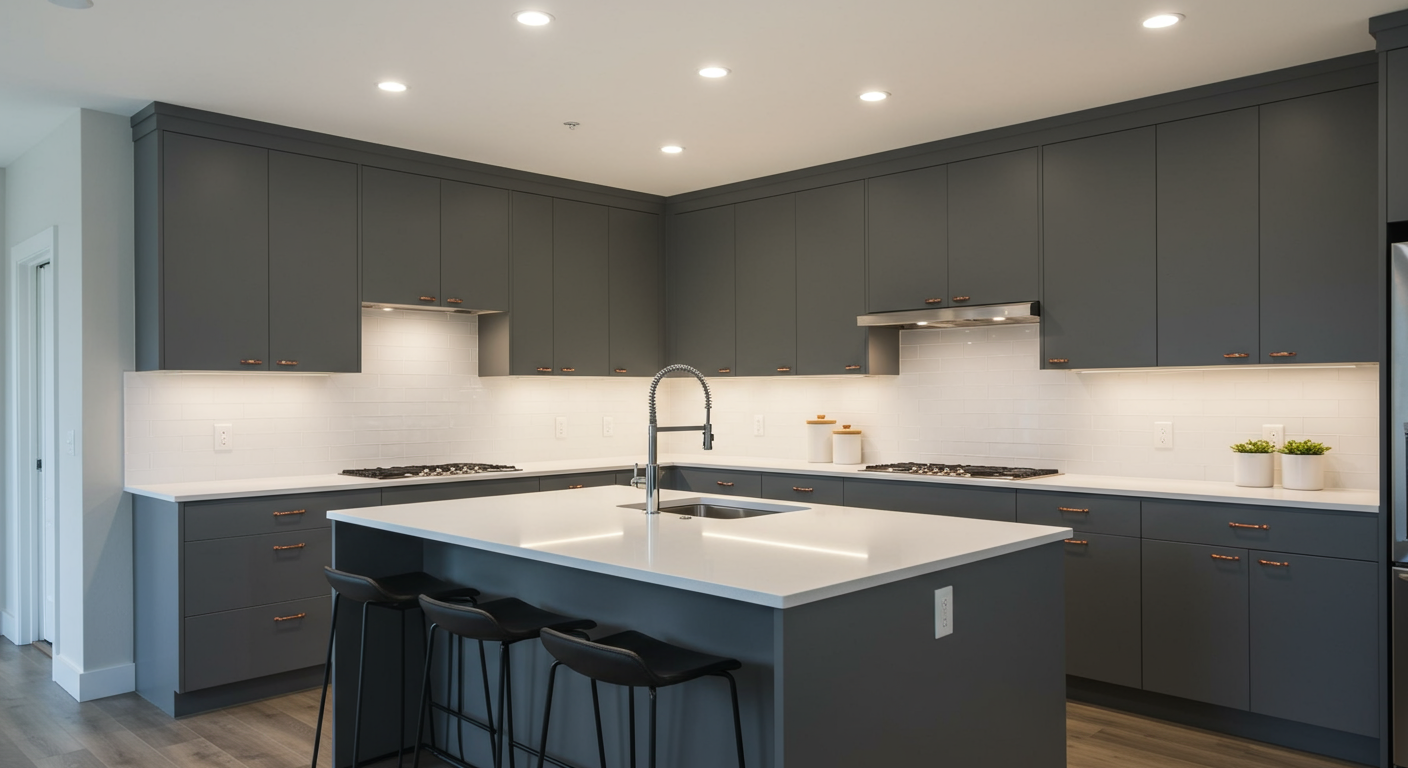
The right light turns a kitchen from “fine” to “I love being in here.” When you’re comparing recessed vs pendant lighting, you’re really balancing two superpowers: recessed lights give you a clean, even glow; pendants add personality and targeted brightness where you work most. The best plan often blends both—but here’s how to choose with confidence.
What They Are (In Plain English)
Recessed lighting sits flush in the ceiling—no fixture hanging down—so it delivers unobtrusive, ambient light that keeps sightlines clean. Pendant lighting hangs from a rod or cord and acts like functional jewelry: it adds style while brightening islands, peninsulas, and dining spots.
How They Look and Feel
Recessed lights create a minimalist, streamlined ceiling that can make a kitchen feel more open—especially helpful in smaller rooms or lower ceilings. Pendants introduce shape, color, and texture, becoming a focal point that ties a room’s finishes together. Used thoughtfully, pendants add warmth and dimension where plain downlighting can feel flat.
How They Work (Function You’ll Notice)
Recessed fixtures excel at broad, even coverage—great for general illumination. Aim them toward work zones and you’ll boost task lighting too, but they can cast shadows if that’s all you use. Pendants bring light closer to the surface, which reduces shadows on islands and prep areas and makes slicing, mixing, and plating more comfortable. Together, they create a balanced, layered scheme that looks good and works better.
Placement and Installation (Keep It Simple)
Recessed requires cutting ceiling holes and planning a grid so light is even—best handled by a pro, especially during a remodel. Pendants typically mount to an existing junction box; height and spacing matter for both looks and glare. Over islands, keep pendants high enough for clear sightlines and low enough to light the surface—most kitchens land in the 28–36 inch range above the countertop.
When to Choose Each

Pick recessed lighting if:
- You want a clean ceiling with lighting that “disappears.”
- Your kitchen is small or your ceilings are low.
- You need consistent, general illumination across the room.
You want a clean ceiling with lighting that “disappears.”
Your kitchen is small or your ceilings are low.
You need consistent, general illumination across the room.
Pick pendant lighting if:
- You want a decorative focal point that adds character.
- You need targeted task light over an island or table.
- You have taller ceilings and room for visual impact.
You want a decorative focal point that adds character.
You need targeted task light over an island or table.
You have taller ceilings and room for visual impact.

Costs, Care, and Efficiency (Quick Reality Check)
Modern LEDs make both options energy‑efficient with long lifespans. Recessed often means more fixtures (and more cutting/wiring), while pendants can cost more per piece but you’ll usually need fewer. Maintenance is light for both—recessed collects less dust; pendants with intricate shades need the occasional wipe‑down.
The Smart Move: Layer Your Kitchen Lighting
Your kitchen will feel best with layers: recessed for ambient light, pendants for task and personality, and under‑cabinet strips to kill counter shadows. This combo gives you bright mornings, cozy evenings, and everything in between—without relying on one type to do it all.
Conclusion
You don’t have to pick sides in the recessed vs pendant lighting debate. Use recessed to keep the room bright and open; add pendants to ground your island and express your style. Start with how you cook and gather, match the light to those moments, and your kitchen will look better—and work harder—every day.


